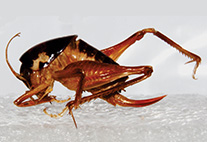Abstract
The sagebrush lizards (Sceloporus graciosus group) consist of four taxa (S. graciosus graciosus, S. graciosus gracilis, S. graciosus vandenburgianus, and S. arenicolus) distributed in western North America. Of these, S. arenicolus is morpho-logically, behaviorally, and ecologically distinct as well as geographically disjunct from the other taxa, occurring only in the Mescalero-Monahans Sandhills of southeastern New Mexico and adjacent Texas. Sceloporus arenicolus is a taxon of concern because of its small range and habitat alteration due to land use practices. Understanding evolutionary relation-ships among members of the S. graciosus group, and especially S. arenicolus, has important implications for conservation. We examine the phylogenetic relationship of S. arenicolus relative to the three recognized subspecies of S. graciosus at mitochondrial and nuclear loci for populations sampled throughout the ranges of these taxa. Additionally, we estimate the divergence time and clade age of S. arenicolus. We find that the S. graciosus group is in need of major taxonomic revision, and also confirm that S. arenicolus is a genetically distinct and divergent lineage. These results bear important conse-quences for conservation and management.

